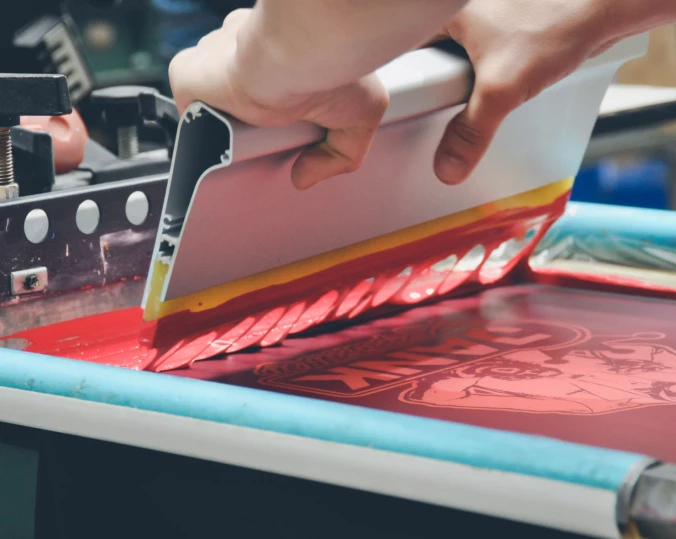MANUFACTURER OF ADVERTISING GADGETS | FAST DELIVERY TIME | FREE CONSULTING
Printing House

Screen printing - what is it?
Screen printing, or screen printing, is a technique that was invented in order to print large areas. As you can guess, the most important task in this method is, of course, played by the screen, which makes it possible to create a specific design and then transfer it onto the chosen printing material. The printing screen is characterised by its meshes, the diameter of which is not too large. This makes it possible to pass the ink very precisely and also to maintain the highest quality print.
Also check out information on more permanent marking, such as laser engraving, which we also use to mark some of our products.
Advantages of screen printing
One of the biggest advantages of screen printing is, of course, the very high durability of the materials created with its help. We can be sure that a T-shirt print made using this technique will not wash off too quickly. Therefore, betting on products that have been created using screen printing is an investment in the future. We also cannot fail to mention that garments or plastics printed with this method will not lose their appearance when exposed to water or UV rays. So if we are going to subject our garments to harsh weather conditions, screen printing will be a great solution.
See: advertising pens
Disadvantages of screen printing
The downside of screen printing is that it is not very efficient. When you compare this technique to other printing methods, you will notice that it is really very time-consuming. This is a minor disadvantage, however, remember, if we want something to be worth our money, we will have to wait a while for it. The next disadvantage of screen printing is the effect of the black "showing through" if we decide to print white on dark material. However, it all depends primarily on the material itself and the ink used, so if you opt for a high-quality product, this problem will be avoided. A final disadvantage may be that screen printing is reserved for the production of a large number of prints, as it is simply not cost-effective for small runs.
Screen printing - application and operation
Screen printing is a technique that is used to print both small areas and much larger ones. This method is used to apply designs to materials such as plastic, cardboard, foil, wood, fabric, metal and many others. As already mentioned, a major advantage of printing in this way is that the prints are resistant to all external factors. Therefore, screen printing is very often used for items that are exposed to them, such as billboards. Furthermore, this technique is used for various products such as envelopes, foil and paper bags or labels. Some of our printed advertising bags are also marked using screen printing. This method has no material or size restrictions and is therefore used very frequently in many different situations. In addition to bags, we also silk-screen our printed corporate sweatshirts and polo shirts.
Screen printing is carried out by applying a small mesh to the printed form, which appears in the form of a template. The stencil is made so that the unprinted area is covered, so that the ink only penetrates the parts that are not covered. This results in the creation of the desired print. The method of blocking the holes itself depends on aspects such as the material, the density of the screen and the type of ink. In most cases, however, a coating of the screen with a special photosensitive emulsion is used, which is first exposed, then developed, and at the very end the elements that have not been fixed are washed out. The template prepared in this way is then ready for printing.
See: printed lanyards
How do you recognise screen printing?
Despite appearances, recognising screen printing is not as simple as it might seem. The first thing to look out for is the colour. A silver, gold, full-colour print or tonal transitions are nothing difficult, so the colours will just look good. However, the texture should tell us the most. If you look closely at the screen print you will notice very small screens through which the ink has been passed. So if you notice that the surface is not perfectly flat, this is a sign that you are dealing with a screen print.
